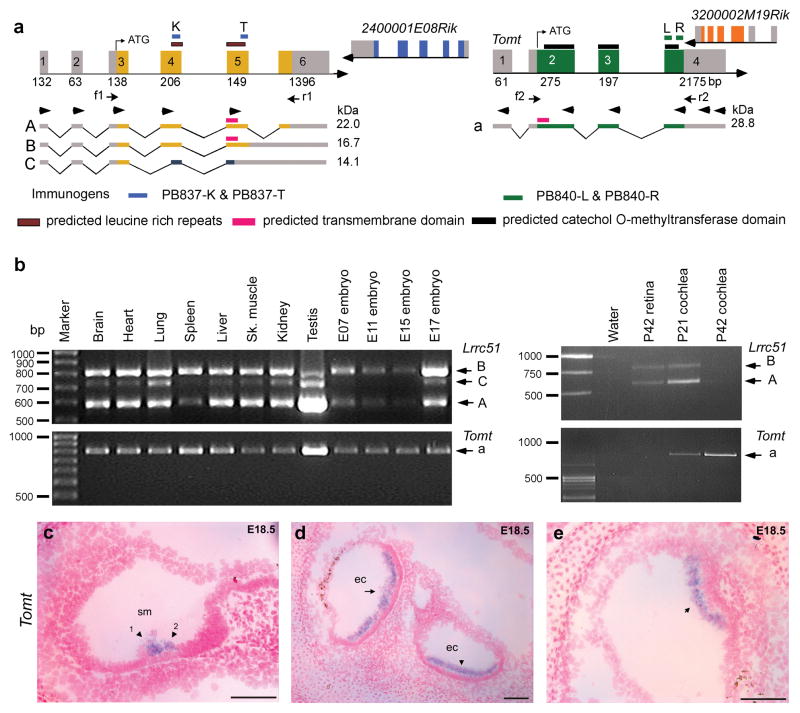Figure 3.
Mouse Lrrc51 and Tomt (a) Chromosomal region 7qE3 is syntenic to human chromosome 11q13.3. Unlike humans, mouse has two separate genes, Lrrc51 and Tomt encoding LRRC51 and TOMT, respectively. Translation of Tomt mRNA starts in exon 2. This ATG of LRTOMT is conserved in primates and located in human exon 8 (Supplementary Fig. 2d online). Right pointing arrowheads in exons 1–5 of Lrrc51 indicate forward RT-PCR primers used in all possible combinations with reverse primers (left pointing arrowheads) in Tomt and cDNAs from mouse brain, liver and heart. No mouse fusion transcripts were recovered (data not shown). Arrows (f1, r1 and f2, r2) indicate primer-pairs for expression profiling in b. (b) PCR analyses of Lrrc51 and Tomt transcripts show ubiquitous expression. (c-e) Tomt sense and antisense cRNA probes were hybridized to sagittal sections of whole mouse embryos from embryonic day 12.5 to 18.5. No signal was detected using the control sense probe (data not shown). (c) At E18.5 specific staining is visible in the region of the sensory cells of the cochlea where outer hair cells (arrowhead 1) and inner hair cells (arrowhead 2) are located. (d) At E18.5 in the utricle (arrow) and saccule (arrowhead), a clear signal can be observed in the region of the sensory cells. (e) In E18.5 sensory epithelium of the cristae ampullaris, Tomt mRNA was detected (arrow). No other tissues showed staining for Tomt at E18.5. Scale bars, 100 μm. sm, scala media; ec, endolymph compartment.

